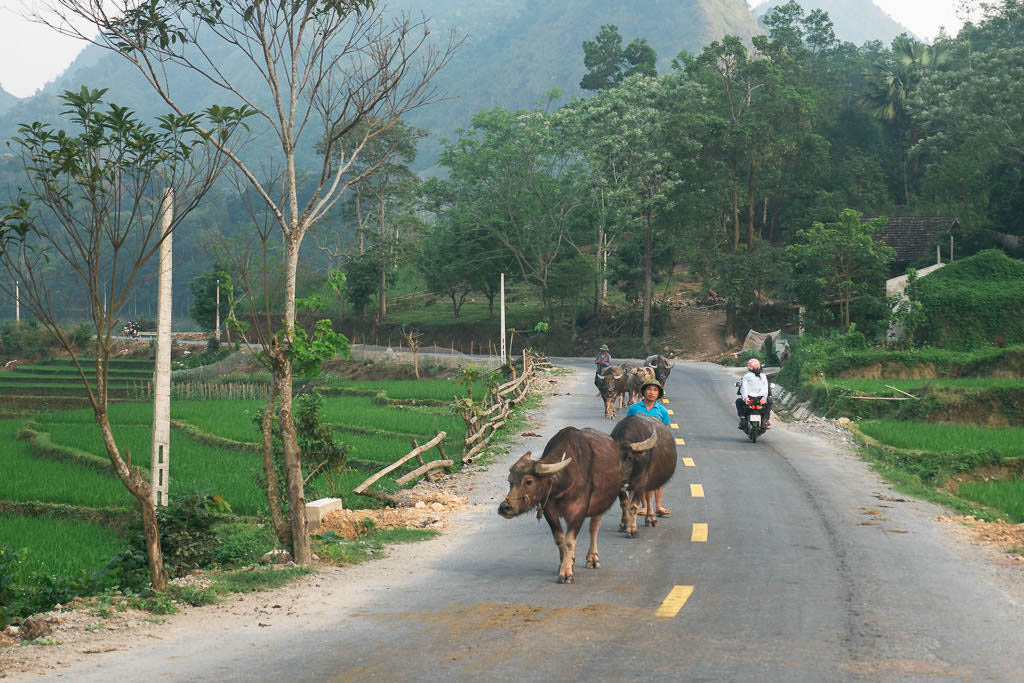
Vietnam has become the third most visited city in Southeast Asia in recent years, and many of the tourists flying into Hanoi or Ho Chi Minh City nowadays are returning to the country. If you fall into that category, too, that probably means you’ve already seen the A-list tourist destinations.
Hanoi, HCMC, Da Nang, Hoi An, Ninh Binh, Dalat, and Sapa are great, and I’ve got detailed guides for each of them on our Vietnam blog.
But in this guide, I’ll present a 3-week alternative Vietnam itinerary for returning visitors or adventurous travellers that will pass through five lesser-travelled areas spanning North to South. The areas I’ve selected offer a “peek behind the curtain” into a realer, rawer Vietnam most tourists don’t get to see, but they’re still visitor-friendly enough to provide a fun vacation.
For each city, I’ll discuss why it’s worth visiting, what to do there, how to get there, and where to stay during your trip.
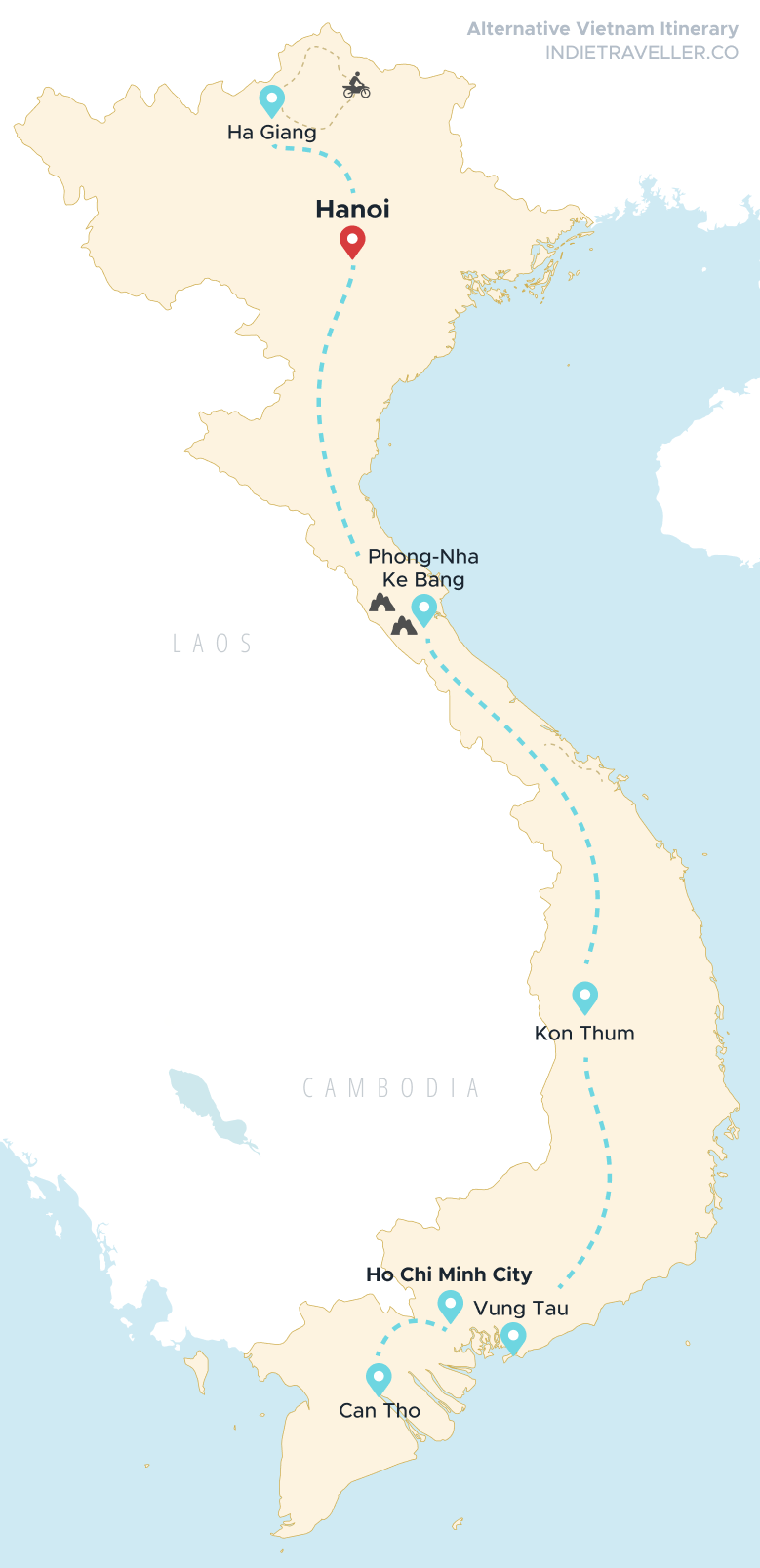
This north-to-south “slow travel” route emphasizes nature experiences and smaller towns, bookended by some of Vietnam’s most buzzing cities.
You’ll ride through epic limestone landscapes in Ha Giang province, venture into caves in the ecotourism hub of Phong Nha, and explore village life in Kon Thum and Vung Tau. The capital Hanoi acts as your starting point, while your last day in Ho Chi Minh City lets you reflect on an amazing adventure.
Of course, there are so many ways to travel through Vietnam. For further inspiration, check out our many Vietnam travel guides, including our tips for backpacking Vietnam and this classic 3-week itinerary covering more of the typical highlights.
Day 1: Arrive in Hanoi
To begin your trip, fly into Hanoi’s Noi Bai International Airport and book a hotel for the night. If you want to extend this itinerary for a few days, try following our hidden Hanoi guide – it will appeal to return visitors more than general Hanoi city guides will.
Also check out the where to stay in Hanoi guide, which highlights more obscure areas like Cat Linh and Banana Island in addition to the usual tourist hotspots.
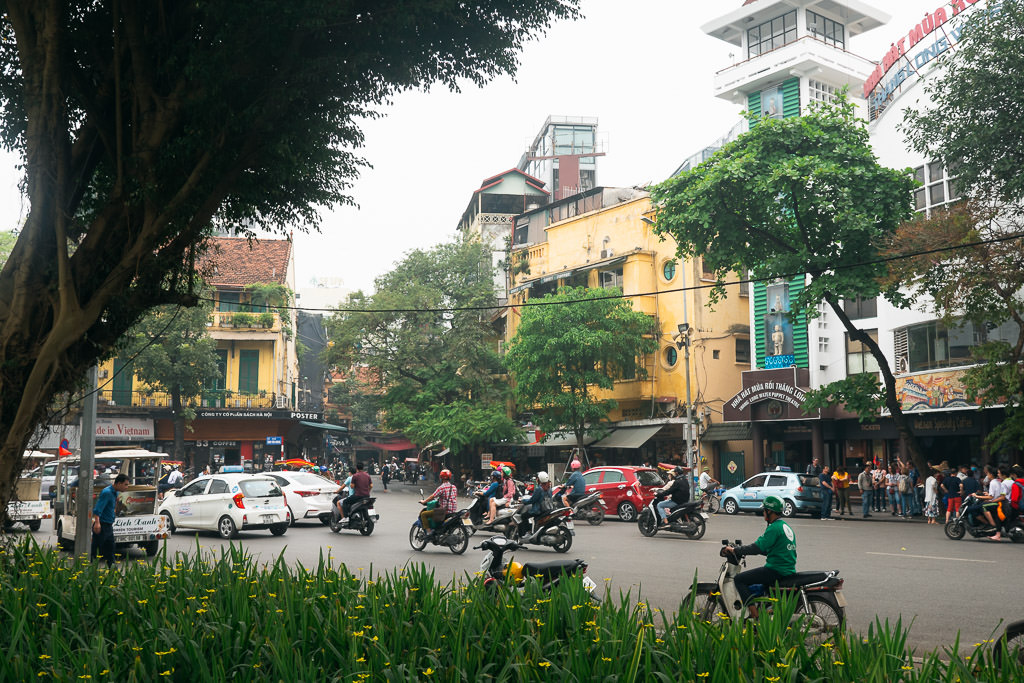
Day 2 – 6: Ha Giang Loop
On the first morning of your trip, head to the city of Ha Giang.
Stay in Ha Giang 1 night, then take a 4-day 3-night Ha Giang Loop tour on days 3-6.
Return to Hanoi in the evening of day 6.
Why the Ha Giang Loop is unique
The Ha Giang Loop is the most beautiful multi-day stretch of rural roads and pathways in Vietnam, hands down.
It’s also a perfect encapsulation of what makes Northern Vietnam distinct from the rest of the country: the landscape of limestone crags, the rustic roads clinging to the sides of those crags, and the 20+ ethnic minorities who have villages along the road make a trip along the loop a once-in-a-lifetime experience.
The Ha Giang Loop is already world-famous in the adventure travel community and has a very streamlined tourist infrastructure, but it’s eluded the mainstream tourist scene, maybe because it’s so far from the nearest airport. Because of that, you’ll feel like you’re the only tourist group for miles around most of the time, which is an experience you’d be hard-pressed to find anywhere else in Asia that’s as beautiful as Ha Giang.
I should note that biking Ha Giang yourself is probably not appropriate for complete beginners when it comes to motorbiking. Some roads do not have guardrails and others have hairpin turns, although it’s generally safe if you take it easy and drive responsibly.
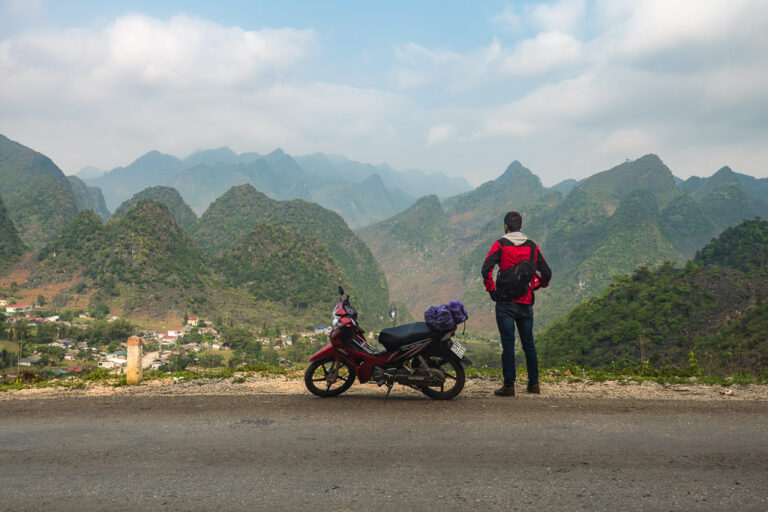 Epic views of limestone peaks all along the Ha Giang Loop
Epic views of limestone peaks all along the Ha Giang Loop 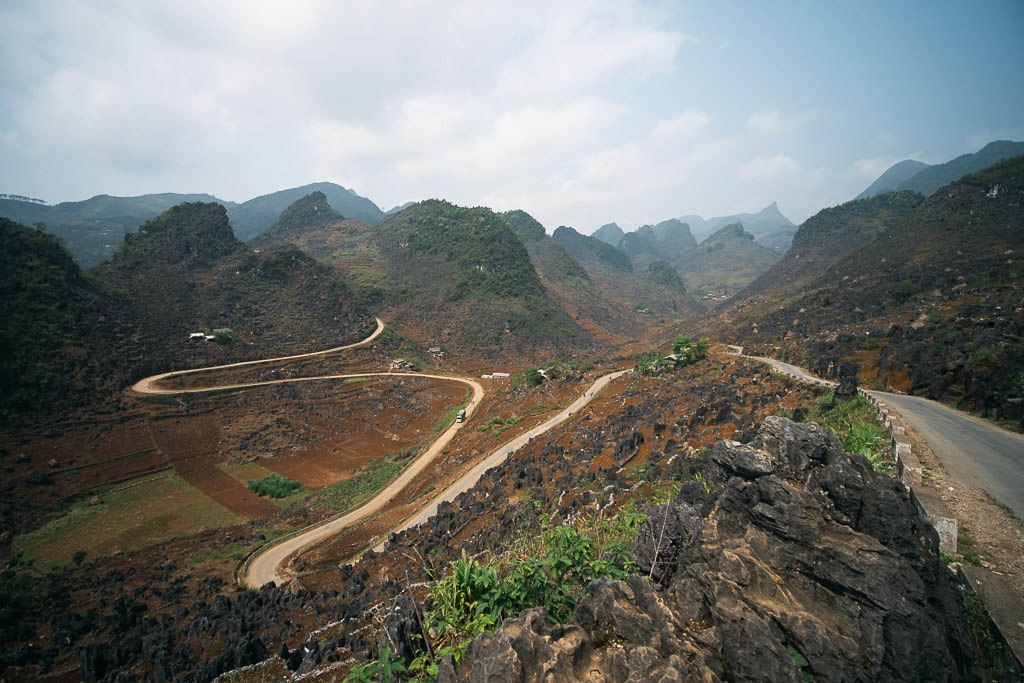 Dong Van pass
Dong Van pass 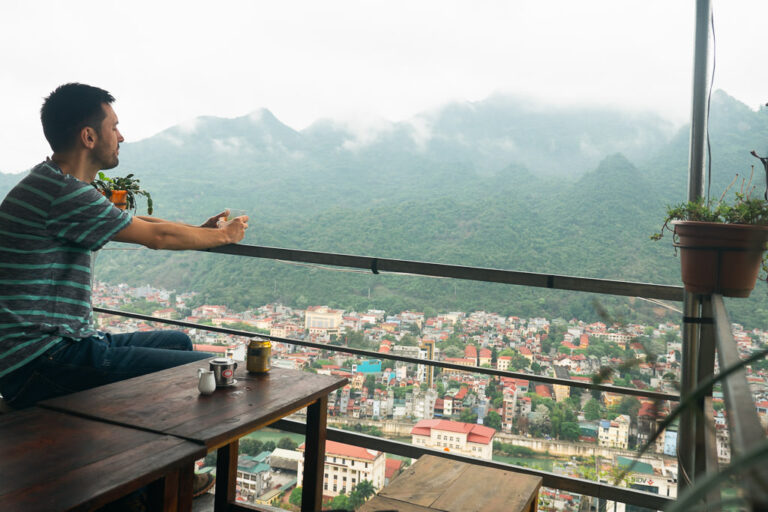 Cafe Núi Cam viewpoint in Ha Giang city
Cafe Núi Cam viewpoint in Ha Giang city
How to get to Ha Giang
Getting to the starting point of the loop in Ha Giang city is a bit of a pain, but trust me that it’s worth it. The most popular ways to get there are included in the table below:
| Travel Method | Travel Time | Recommended Booking Page | Approximate Cost (lowest) | Notes |
|---|---|---|---|---|
| Sleeper Bus | 5-6 hrs | 12GO | $11/person | Comfortable but inexpensive; the last 25% of the ride is curvy and hilly |
| Taxi | 4.5-5.5 hrs | 12GO | $105/car for 4-seater$135/car for 7-seater | Most convenient and cost-effective for large groups |
| Motorbike | 7-8 hrs | 13535 Motorbike Rental | $10/day | Obviously, more tiring. $400 deposit. Intermediate motorbiking difficulty. |
How to ride the Ha Giang Loop
Once you’re in Ha Giang city, the three best ways to actually ride the Ha Giang Loop are:
With easy rider (back of a bike)
This will be the best option for most people because it doesn’t require a license or driving experience. The guides who drive you on these multi-day tours know the route like the back of their hand, and they can provide interesting commentary about the scenery as it passes.
Book a 4 day, 3 night tour (including accommodation) at Ha Giang Tours for $240/person or $260/person if you want to stay in private hotel rooms.
By personal motorbike
I HIGHLY recommend this method for those who are comfortable driving a motorbike and have a license to do so in Vietnam. The ability to go at your own pace and explore all the back roads and ethnic villages you desire makes the ride come alive; read my colleague, Marek’s, account of his DIY Ha Giang Loop trip in 2019 for an example.
If you rented a bike in Hanoi to drive up to Ha Giang, you can take the same bike on the loop. Otherwise, rent a bike at QT Motorbikes. Rentals are as cheap as $8/day, though you might want to spring for the $15/day bike to get more power on the hilly Ha Giang Loop.
By jeep
If riding a motorbike (even if someone else is driving) on the Ha Giang Loop feels too precarious to you, consider a jeep adventure. A regular car is too enclosed and will significantly detract from the Ha Giang Loop, but jeeps still let you feel the cool mountain air rushing by your face.
I’d recommend Ha Giang Jeep Adventure’s 4 day, 3 night Off-the-Beaten-Track Off-road Jeep Tour for $520/person.
What to do along the Ha Giang Loop
Some activities along the loop to make the most of your adventure include:
- Taking photos at viewpoints, especially Heaven’s Gate Pass, Ma Pi Leng Pass, and Vietnam’s North Pole (Lung Cu Flag Tower)
- Explore ethnic minority villages along the way
- Try local food in ethnic villages and visit local markets
- Sleep in a homestay with a local family (most tours include this experience)
- Visit the Old Quarter in Dong Van, especially the pop-up market on the weekends there
- Swim in “hidden” waterfalls like Du Gia Falls, Lung Tam Falls, Nam Dich Falls, and Tham Luong falls
Day 7–10: Dong Hoi/Phong Nha
On either night 6 or morning 7, head to Dong Hoi via one of the methods described below. I’d recommend spending two full days exploring Phong Nha while here, and in between a full day in Dong Hoi City as a rest day.
Why Dong Hoi is unique
Dong Hoi is my favorite small city in Vietnam. It strikes the perfect balance between quaint local charm, modern urbanism, eco-friendly city design, and civic beauty. It’s also in a fantastic location, on the coast but also just next to the golden rice fields and dry expanses of poetically desolate farmland that are so strongly characteristic of Central Vietnam.
Of even more interest to most tourists than Dong Hoi City itself, though, is Phong Nha-Ke Bang National Park, about 45 minutes away. It’s home to a myriad of spectacular caves, some of which are covered in the “what to do” section below. It also has some spectacular hiking and biking, which is a great primer on the kinds of landscapes the wilderness of Central Vietnam has to offer.
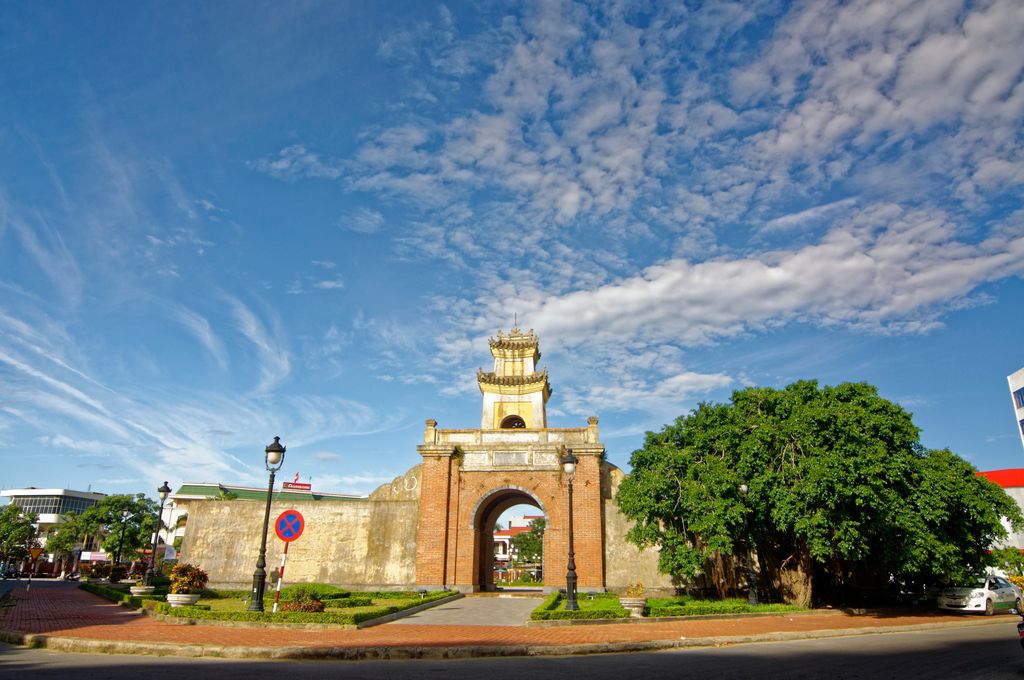 Dong Hoi Citadel
Dong Hoi Citadel 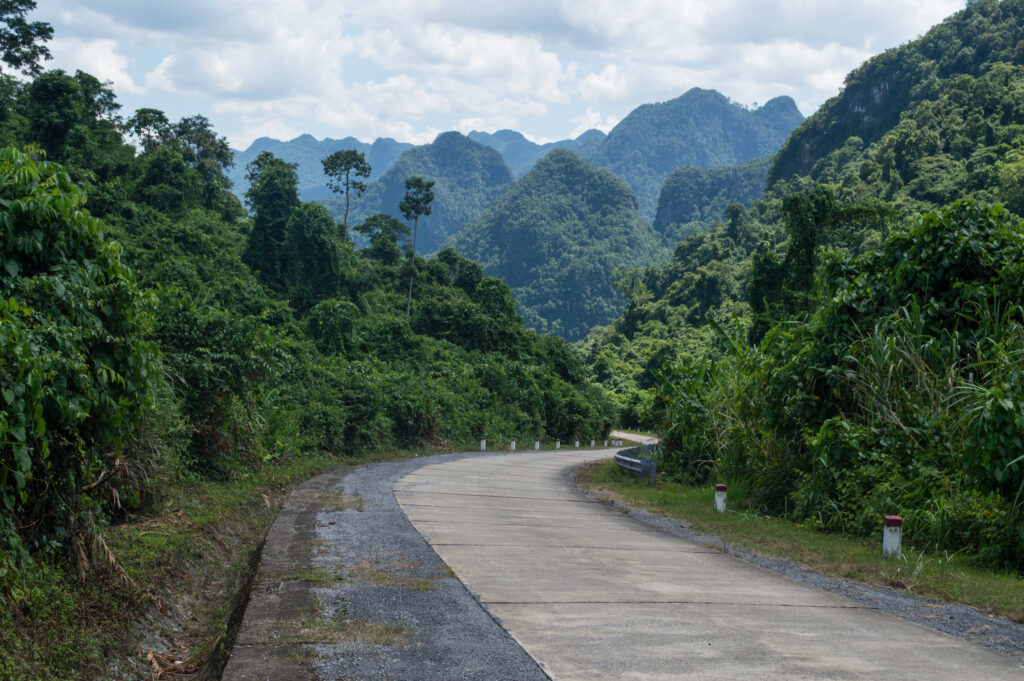 (iStock/MilesAstray)
(iStock/MilesAstray)
How to get to Dong Hoi
From Hanoi, the best ways to get to Dong Hoi are:
| Travel Method | Travel Time | Recommended Booking Page | Approximate Cost (lowest) | Notes |
|---|---|---|---|---|
| Plane | 70 mins in the air | Vietjet (budget) or Vietnam Airlines (upscale) | $40/person$100/person | Most expensive but quickest |
| Train | 10.5 hrs | 12GO | $50/person for sleeper berth | Slow but comfortable and scenic |
| Bus | 6.5-7.5 hrs | 12GO | $15/person | Cheap and surprisingly comfortable |
Note: I can’t emphasize enough how beautiful the train ride from Hanoi to Dong Hoi is, especially the last 2-3 hours of the trip. Read my detailed guide for a deep dive into Vietnam’s train journeys.
Where to stay in Dong Hoi
The hotel sits just steps from Nhat Le River and minutes from the beach and has surprisingly large, high-ceilinged rooms with clean bathrooms and AC
This is the sister property of Nam Long Hotel that’s a little more flashier and with clean dorms and rooms
This place first strikes you with its French-Colonial charm and Vietnamese architecture, then with the countryside setting of rice fields, water buffalo, and distant mountains
4 Things to do in Dong Hoi/Phong Nha
Some experiences you can have in Dong Hoi/Phong ha include:
1. Nhat Le Beach
Nhat Le is actually in Dong Hoi, which is why it’s so surprising how clean and uncrowded it is. Sunrise on the beach is especially beautiful. The beach is free, though you might want to spend $1 or $2 to rent a lounger.
2. Tan Toa Church & Riverwalk
Tan Toa Church is a beautiful piece of architecture, and it’s beside a very scenic river walk.
3. Dong Hoi street food tour
This evening bicycle tour from Phong Nha Daily Tours costs $30/person and is a great way to learn about central Vietnam’s cuisine, which is very different from North or South Vietnam’s.
4. Phong Nha-Ke Bang National Park
Phong Nha has some spectacular caves, including the largest cave in the world, Son Doong. Some of the most rugged caves like Dark Cave, Tu Lan, Hang Tien, and Son Doong itself require you to purchase a tour, in which case I advise Oxalis Tours. But a few spectacular caves, like Phong Nha Cave and Paradise Cave, are DIY-friendly.
Check out Marek’s post on his Phong Nha adventures for more details on self-guided tours. The national park has tons of hiking and biking trails to explore, also detailed in Marek’s post.
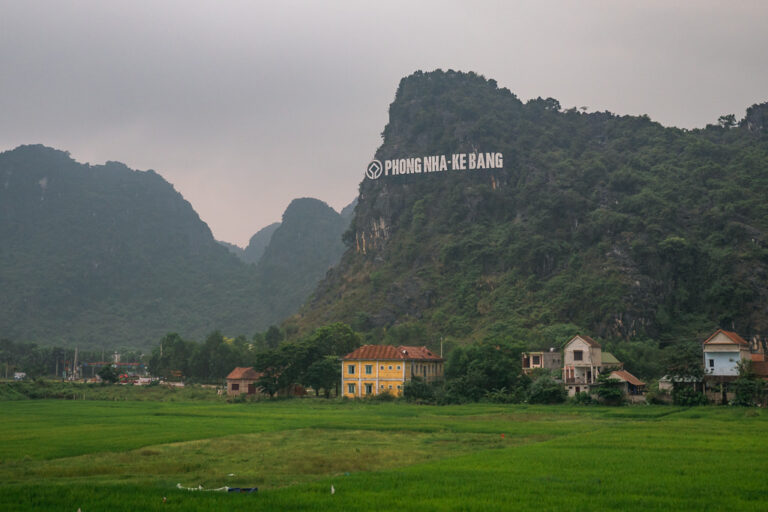
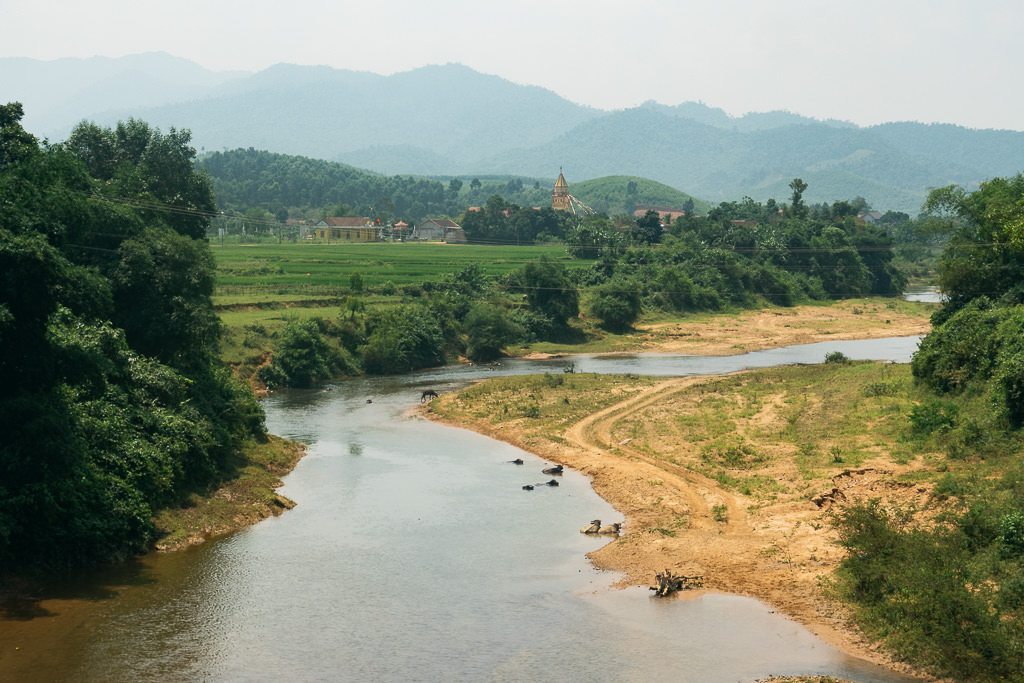
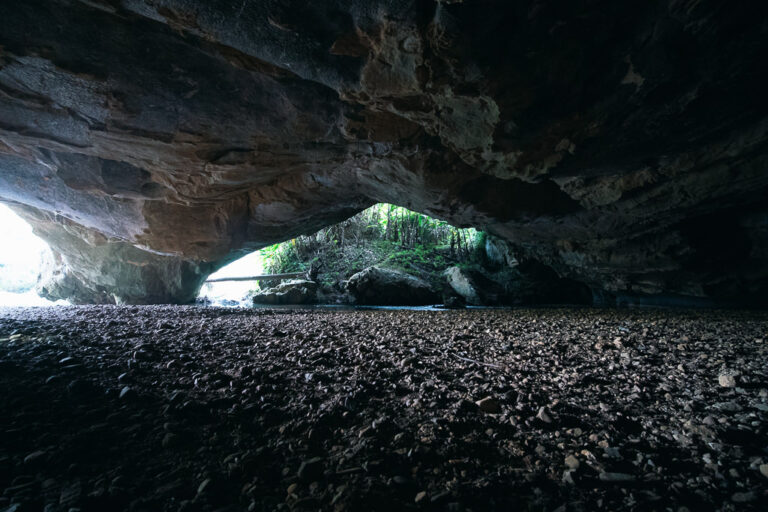
Day trips from Dong Hoi
Several popular day trips from Dong Hoi other than Phong Nha-Ke Bang are:
Day 10–14: Kon Tum
On evening 9 or early morning 10, head to Kon Tum via one of the methods described in the table below.
I’d recommend spending one full day in Kon Tum City and using it as a base for two or three-day trips, also described below.
Why Kon Tum is unique
Kon Tum embodies the soulful feel of Vietnam’s Central Highlands culture. The red earth roads, misty rolling hills, and pine-choked forests of the area make the landscape very different from most of Vietnam. The intensely spiritual ethnic groups that have settlements in the area give the culture a different feel, too.
Kon Tum is probably the most “rugged” locale on this itinerary, because getting around is so tough and the tourist infrastructure is not very well-developed that could be seen as a negative to some, but if you appreciate cultural adventures – which I’d bet you do if you’re reading this – then I would guess the “trailblazing” feeling of your time here will make it one of your highlights.
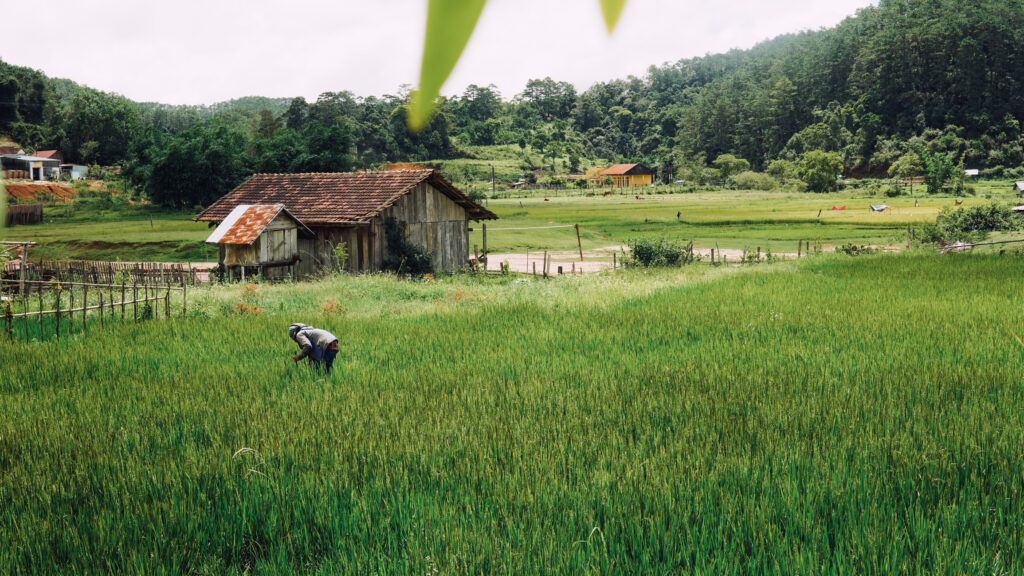 (iStock/TramLuong)
(iStock/TramLuong)
How to get to Kon Tum
The best ways to get from Dong Hoi to Kon Tum are listed in the table below:
| Travel Method | Travel Time | Recommended Booking Page | Approximate Cost (lowest) | Notes |
|---|---|---|---|---|
| Plane | 8 hrs; 3 hrs in the air, 4.5 hrs layover, 40 min drive | Google Flights (since the trip has two legs, it’s easier to use an aggregator) | $100/person (Vietjet)$220/person (VN Airlines) | Dong Hoi → HCMC → Pleiku → Kon Tum; most expensive but quickest |
| Bus | 13 hrs-14 hrs | 12GO | $25/person | Cheap, scenic, and surprisingly comfortable |
Where to stay in Kon Tum
Ranked #1 of 7 specialty lodgings in Kon Tum, this quiet homestay sits within a family compound surrounded by a lush garden of vegetables and flowers
This mid-luxury hotel is surrounded by forested hills so expect nice views, elegant rooms with good privacy, tasteful decor, and soundproofing
4 Things to do in Kon Tum
Kon Tum has a few activities in town that really showcase the area’s mixture of rugged nature and spirituality, such as:
Day trips from Kon Tum
The area around Kon Tum varies a lot in terms of geography, so it’s a great opportunity to take a few days trips. Some of the best options are:
- Mang Den Town, about 2 hours northeast of Kon Tum. The hill town has an almost alpine feel and is sometimes called “The Second Da Lat”.
- Tan Canh Battlefield. It’s steeped in war history, and the area is surrounded by pretty minority villages. The drive up there is also beautiful.
- Chu Mom Ray National Park. About 2 hours west of Kon Tum, the park actually touches both Cambodia and Laos. It’s one of Vietnam’s least-explored national parks, home to gibbons, rare orchids, and a chunk of the original Ho Chi Minh Trail. The park is fairly remote, so I’d recommend a tour like the Chu Mom Ray Trekking from Hai Dang Travel. The agency operates mainly in Vietnamese, so be sure to call and request an English-speaking guide in advance.
- If you’re comfortable on a motorbike, the Kon Tum-Kham Duc loop outlined on the map below is one of the prettiest stretches in Central Vietnam. Rent a bike at Dich Vu Motorbike rental for $7/day and head north via the route.
Day 14–17: Vung Tau
On night 13 or morning 14, set out from Kon Tum to Vung Tau using one of the transport methods below.
Why Vung Tau is unique
I’ve travelled around Vietnam thoroughly over the past 10 years, and the beach town of Vung Tau is the most comfortable Vietnamesecity I’ve visited.
The province it’s in, Ba Ria, has the highest GDP per capita out of any in the country, and Vung Tau is the outlet for much of that wealth. Because of it, it has clean roads, vibrant parks, fantastic restaurants and cafes, nice hotels, and a gorgeous waterfront that’s flanked by a long promenade for evening walks. The whole thing is underpinned by a slow-paced, small-town tropical feel that screams both “upper-middle class” and “South Vietnam”.
Vung Tau’s easy, breezy vibe makes it immensely popular with domestic tourists, but the town has somehow stayed off the radar of international tourists, especially those from Western Countries, so it feels more authentically Vietnamese than well-known beaches like Nha Trang, Mui Ne, or Phu Quoc.
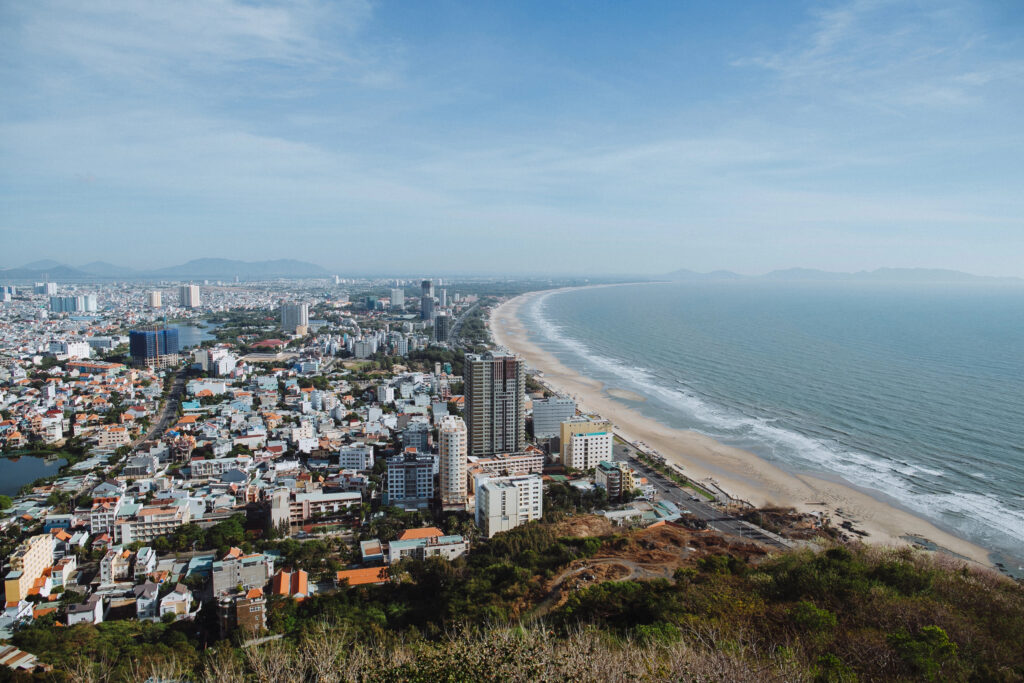
How to get to Vung Tau
Any trip from Kon Tum to Vung Tau should start with a trip to Pleiku Airport via bus or taxi and a flight from there to HCMC. I usually include sleeper bus as a transport option, but the ride from Kon Tum to Vung Tau is 20 hours, and that’s a bit too long to be worth it under any circumstances.
After arriving in HCMC, you have a few good options for the short trip to Vung Tau:
| Travel Method | Travel Time | Recommended Booking Page | Approximate Cost (lowest) | Notes |
| GrabCar | 2-2.5 hrs | Grab App (Android or iOS) | $50 (4 seater)$70 (6 seater) | Most convenient |
| Bus | 3-3.5 hrs | 12GO | $9/person | Cheap and comfortable |
| Ferry | 1.5 hrs | Greenlines | $11/person | Most scenic; leaves from District 1 |
In terms of value for money, this is easily the top pick. The rooms are clean, relaxing, and comfortable, and the pool becomes absolutely stunning at sunset
This hotel offers bright, airy rooms with city or sea views, and a rooftop pool and terrace that offer the perfect perch to watch the sun set over the coastline.
Fati Boutique Hotel & Apartment
Located near Bai Dau Beach, this modern, family-friendly hotel features a tropical‑green decor, offers mountain and sea views, free morning coffee and snacks, and a nice rooftop
5 Things to do in Vung Tau
There’s tons to do in Vung Tau. Some of my favorite activities there are:
- Visit the two beaches. Bãi sau (front beach) is livelier and has more food vendors nearby, while bãi trước (back beach) is more scenic and serene. Both beaches have extremely nice stone promenades abutting them that are perfect for morning or evening walks.
- Enter the Jesus statue on Nui Nho Mountain. The mountain is in the middle of Vung Tau and has 811 steps leading up to the top, where there’s a 32-metre statue like the one in Rio de Janeiro.
- Tour the White Palace, a gorgeous East-meets-West estate that housed French governors and Vietnamese emperors. Admission is just $0.60.
- Explore Thích Ca Phật Đài, a hilltop pagoda complex with great views.
- Take the cable car to Ho May Amusement Park for $17/person.
Day trips from Vung Tau
I’d recommend choosing one of these day trips near Vung Tau and trying to work it into your stay:
- Long Hai, 45 minutes northeast, for a more “fishing village”-type beach experience.
- Ho Tram, 90 minutes north, for a resort-style beach experience.
- Binh Chau Hot Springs, 2 hours northeast, for a huge spa.
Day 17–20: Can Tho
On the afternoon of day 17, head to Can Tho using one of the methods described below. I’d recommend incorporating two day trips (described below) into your Can Tho stay.
Why Can Tho is unique
Can Tho is the only truly developed city in the Mekong Delta region, which is far and away the best showcase for South Vietnam’s natural beauty… you can read in more detail why the region is so special in my Mekong Delta travel guide.
Can Tho marries together the comfort and convenience of the city with the area’s unmatched natural beauty perfectly. This is the only place where you can stay in a nice clean hotel, go to a rooftop bar, then take a 10-minute boat ride along the peaceful, palm-lined backwaters of the Mekong.

How to get to Can Tho
Although Can Tho technically has an international airport, it doesn’t receive very many flights at all. Vung Tau, the previous stop on this itinerary, doesn’t have a public airport nearby, anyway, so you’ll have to travel to Can Tho by road; the best options are bus and taxi.
A bus is the cheapest option; a Vung Tau-Can Tho bus ticket is only $15 on 12GO. Just make sure when booking that your bus goes straight from Vung Tau to Can Tho Central Bus Station, because many of the routes to Can Tho end at Cai Tac station, which is not quite in Can Tho. The buses are surprisingly comfortable and have seats that recline fully. The trip takes 6 hours.
Another option is a Vung Tau-Can Tho taxi from Mui Ne Private Car. It’s more expensive; $112 for a 4-seater, $116 for a 6-seater, and $172 for a 14-seat van. Remember that you’re renting the whole car for that price, though, so it’s not too much more if you’re travelling with more than a few people. The private cars also allow you to stop wherever you want along the way and provide door-to-door service. A nonstop trip takes 5 hours.
Where to stay in Can Tho
Boutique Lodge Can Tho Homestay
One of Can Tho’s top-rated stays (9.7 on Booking.com), this riverside homestay offers cozy accommodations and immersive local tours
An eco-lodge with tastefully decorated rooms, lush surroundings, an outdoor pool, and private tours to the Cai Rang Floating Market
A boutique homestay in the city center, featuring spacious, well-kept rooms, a cozy café with guava iced tea, and easy access to the waterfront, night market, and boating dock
A great rustic riverside homestay to experience authentic Mekong Delta life, where you’ll stay in thatched-roof bungalows with scenic river views
5 Things to do in Can Tho
Some activities you should check out in Can Tho include:
- Touring Cai Rang Floating Market – The best way to purchase tickets is to physically go to Ninh Kieu Wharf (in the middle of Can Tho) and buy a ride from one of the boat drivers for the next morning. Be sure to book an early boat, departing at 5:30 A.M. or earlier. Tickets cost $3-5/person.
- Walking in Can Tho’s parks at night.
- Take a food tour with Can Tho River Tour – the Mekong’s cuisine is pretty unique and the tours are free (but be sure to leave a tip).
- Visit Temples – Munirensay Temple is not as elaborate as some other temples in the city, but it’s a shrine to Khmer Buddhism in particular so it has some distinct Mekong flair. Ong Temple, near the waterfront, is elaborate and well-preserved.
- Shop at the Can Tho night market near the city’s lovely waterfront promenade. The market is only open on weekends.
Day trips from Can Tho
- Tra Su Capjeput Forest – A swampy forest alive with colourful tea trees, water hyacinths, and nesting storks. Be aware the forest is a 3 hour trip each way.
- Sa Dec Flower Village – A huge garden of flowers and bonsai trees kept in a distinctly “rural Mekong” style. Overlooking the plants is a French colonial mansion.
- Daytime Cycling – Rent a bicycle in Can Tho (almost all guest houses offer cheap rentals) and explore local back roads on bike. I’d recommend going to Phong Dien Market, Muoi Cuong Cacao Farm, and the numerous country roads in that area.
Day 21: Depart from Ho Chi Minh City
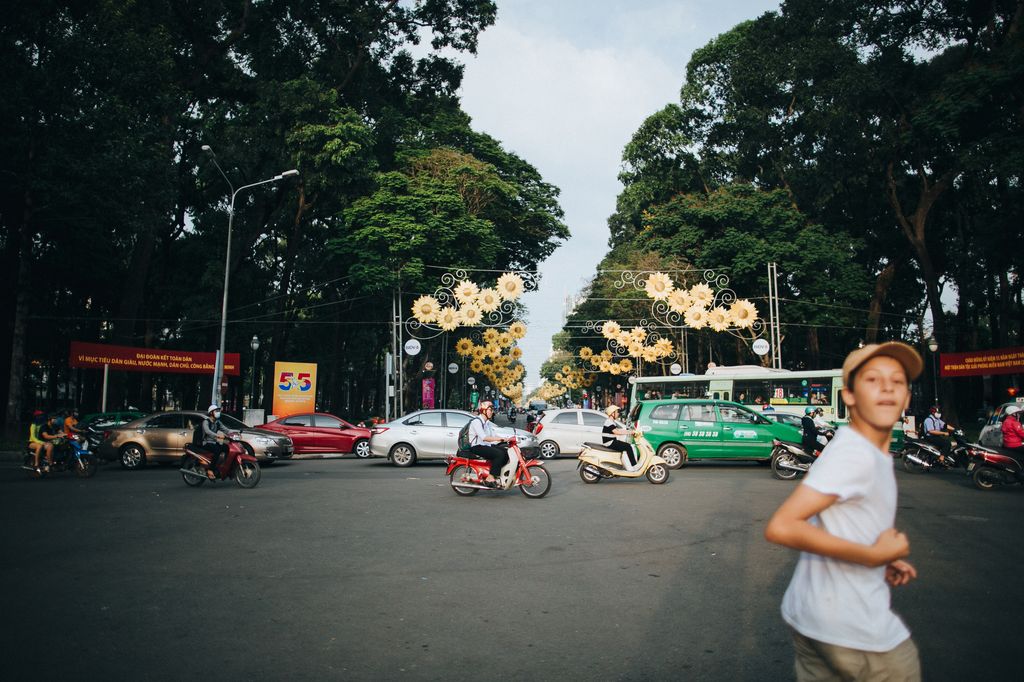
On the morning of day 21, take a bus or taxi back to Ho Chi Minh City for your departure flight. If you have any extra time to kill before you leave and want to squeeze in a little more adventurous activities, check out the guide I wrote for off-the-beaten-track activities in Saigon.
Please visit:
Our Sponsor
